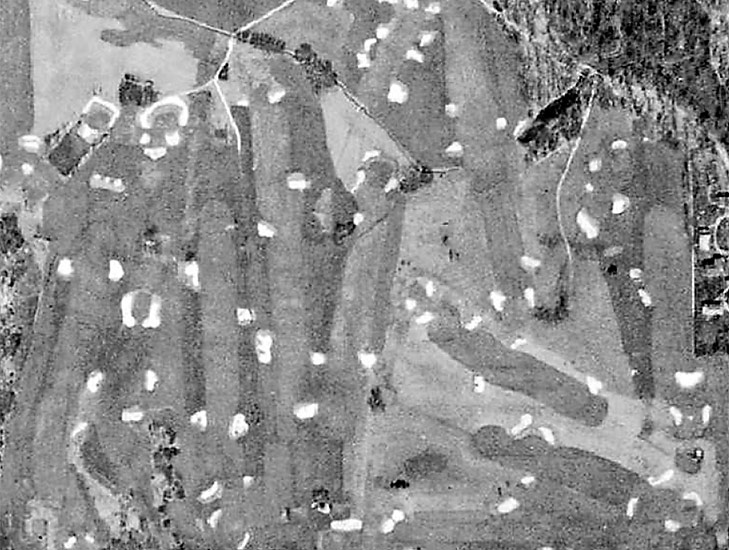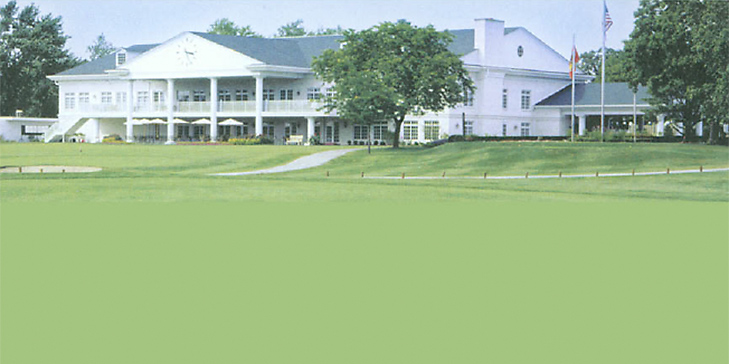Ray Hearn Golf Course Designs has been selected to lead a restoration and renovation project at the historic course at the Midlothian Country Club near Chicago, US.
In an interview with GCA, Hearn expressed his pleasure at being given the opportunity to work on a course that opened in 1898 and is one of a number designed by architect Herbert J. Tweedie in the Chicago area.
“To be able to be commissioned for a course that is pre-1900 in the United States is rare,” he said. “I jumped for joy when we were selected.”
Hearn previously completed a restoration and renovation at another Tweedie-designed course at the Flossmoor Country Club, and the architect noted some very impressive features of Tweedie’s work.
“He had two abilities that were very fine for a golf course architect,” explains Hearn. “His routings really displayed tremendous variety, and focused on shot value and strategy. This is the foundation of every design, and Midlothian is no exception. I would call the heart and soul of every golf hole is the green complexes and he was extremely strong and talented with that.”
Hearn said that golfers from across the American Midwest comment on how Tweedie’s greens can be very deceiving.
“He used constant slopes but varied them in terms of gradient, making it very difficult to judge,” said Hearn. “The greens at Midlothian are absolutely exceptional.”
Midlothian Country Club was selected to hold the 1914 US Open championship, and Donald Ross carried out work on the course ahead of the tournament.
“I’ve been involved with a number of Ross restorations and renovations,” explained Hearn. “Ross came in in 1913, and did a wonderful job with the bunkers. He also adjusted some of the grass lines on the fairways and the rough.
“Tweedie had an exceptional talent for routing and green design, but bunkers were not his strength. Ross picked that up, honoured Tweedie’s design in terms of routing, and had the bunker design as his main focus ahead of the 1914 open.”
“The Midlothian Country Club historians shared a 1930 aerial photo with me (see below), and they concurred that these bunkers are very similar to what Ross did in 1913, as the bunkers were not touched between these dates.”
 Courtesy of Midlothian Country Club
Courtesy of Midlothian Country Club
The opportunity to work on courses of such historical significance is a challenging prospect for Hearn, but one the Michigan-based architect relishes.
“As a golf course architect, one of the most difficult tasks is looking at these classics, these tremendous visions from the past from these great architects, and bringing them into the modern day game,” he explained. “Hitting distances have advanced with club and ball technology over the years, especially from 1913, and the technology in the field of maintenance has also come a long way.
“What I look at in all my designs is the shot value and strategy. I like Dr Alister MacKenzie’s principle that the golf course should be very enjoyable for the masses. In golf design, that’s very difficult to achieve. If you equate it to building architecture, you’ve got this beautiful old Victorian home, but the rooms inside are not modern day. I’m looking at this work of art, this historic masterpiece, and I’m bringing it forward so that it works with modern day hitting systems.”
Bringing the course up to modern golfing standards is the cornerstone of Hearn’s project at Midlothian Country Club, but the architectural history of the course is something he firmly respects and is committed to preserving.
“The history of this course is incredible. I respect the forms and the shapes that Mr Ross integrated in the design in 1913, I respect the green complexes and routing that Mr Tweedie did in 1898, but I have to adjust some things. I can’t just take every bunker Ross did in 1913, find it and restore it. I can do that for some of them for posterity’s sake, but others I have to move into challenging modern day golfers. Some of the bunkers have to be adjusted, but I can keep the spirit and shape of the bunkers Mr Ross created in 1913.”
Hearn will be taking out many of the trees on the course,which he feels he has been tainted to a degree by overplanting.
“I’m taking out specific trees in certain areas to really reopen and rekindle the spirit of Tweedie’s design and Ross’s redesign,” said Hearn. “I’m also doing significant bunker work in terms of restoration and renovation. I’m also restoring some of the grass lines that Mr Tweedie and Mr Ross implemented on the fairways.”
 Courtesy of Midlothian Country Club
Courtesy of Midlothian Country Club
Hearn is also carrying out what he refers to as an‘archaeological dig’ on the greens at Midlothian Country Club.
“I’m taking a soil probe, going around and finding some of the original green edges,” he said. “We’re going to restore those, and what is so fulfilling about this is that the relationship of some of those edges relate to Mr Ross’s bunkers, both in the case of a bunker that’d been lost over time or a green edge that had been lost. To find those and bring those both back ends up in many cases as unveiling this lost, glorious pin point on the green that golfers will look at and say ‘wow, I would never have imagined the pin there’. It’s so fun to find these and match up this lost relationship of the design.”
Over the course of the past nine years, 80 per cent of Hearn’s firm’s workload has been renovation and restoration projects in the US, and the architect said that he’s fallen in love with this kind of work. The firm has recently been commissioned to carry out a similar project at the Schenectady golf course in Schenectady, New York.
The project at Midlothian is currently at the preliminary masterplan stage, and Hearn will be meeting with representatives at the club to move the project forward over the coming weeks.
“I’m going to present that to the club in a couple of weeks time,” said Hearn. “If approved we advance to the final design stages.”